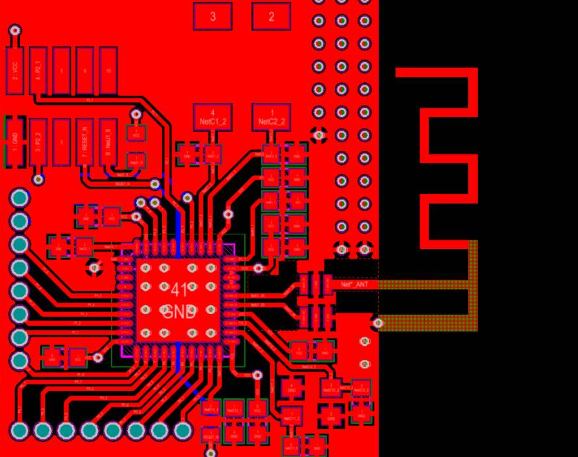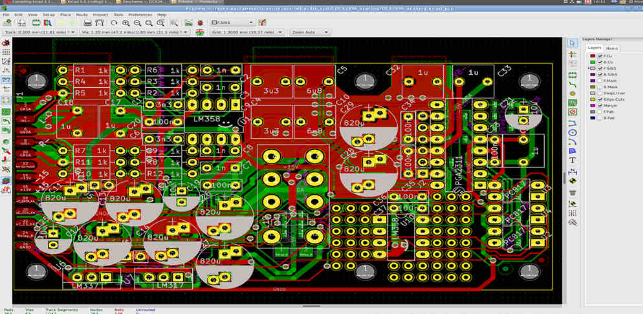DDR4 PCB Design and Simulation: Best Practices and Methodologies
Abstract
This paper explores the critical aspects of DDR4 memory interface PCB design and simulation, providing engineers with comprehensive guidelines for implementing high-speed memory systems. Covering topology selection, routing constraints, power delivery network design, and advanced simulation techniques, the article presents a systematic approach to overcoming DDR4 design challenges. Through detailed analysis of signal integrity (SI), power integrity (PI), and timing considerations, we demonstrate methodologies for achieving robust DDR4 implementations in modern computing systems.
1. Introduction
The evolution of DDR memory technology has reached its fourth generation with DDR4, offering significant improvements over previous standards. DDR4 interfaces operate at data rates ranging from 1600 Mbps to 3200 Mbps (and beyond with overclocking), presenting substantial design challenges for PCB engineers. Proper implementation requires careful consideration of physical layout, signal integrity, power distribution, and thermal management.
This paper addresses the complete design flow for DDR4 memory subsystems, from initial planning through final validation. We examine the electrical characteristics of DDR4 signals, appropriate stackup design, routing strategies, termination schemes, and comprehensive simulation methodologies to ensure reliable operation at target speeds.

2. DDR4 Electrical Characteristics and Specifications
2.1 Key DDR4 Parameters
DDR4 introduces several architectural changes that impact PCB design:
- Operating voltages: VDD = 1.2V ±3%, VPP = 2.5V ±5%, VTT = 0.6V ±3%
- Data rates: 1600-3200 MT/s (with JEDEC standards extending beyond)
- Burst length: 8 (BL8) or 16 (BL16)
- Bank groups architecture for improved efficiency
- DQ bus inversion and data bus CRC features
2.2 Signal Groups and Their Requirements
DDR4 interfaces consist of several distinct signal groups, each with specific design requirements:
- Clock Signals (CK_t/CK_c): Most critical signals requiring tight length matching
- Command/Address (CA) Bus: Includes RAS#, CAS#, WE#, CS#, CKE, etc.
- Data Bus (DQ/DQS/DM): Bidirectional data signals with associated strobes
- Control Signals: ODT, RESET#, etc.
- Power Delivery: Multiple voltage domains with strict noise requirements

3. PCB Design Considerations for DDR4
3.1 Stackup Design
An optimal layer stack is fundamental for DDR4 implementation:
- Minimum 8-layer stackup recommended for moderate complexity designs
- Preferred stackup for 8-layer board:
- Signal (microstrip)
- Ground
- Signal (stripline)
- Power
- Ground
- Signal (stripline)
- Power
- Signal (microstrip)
- Critical signals should route adjacent to solid reference planes
- Maintain consistent dielectric thickness for impedance control
3.2 Routing Topologies
DDR4 supports several routing topologies, each with advantages and tradeoffs:
- Fly-by Topology (Recommended for DDR4):
- Memory devices connected in daisy-chain fashion
- Provides best signal integrity at high speeds
- Requires careful stub length management
- T-topology:
- Balanced branches from central connection point
- Limited to lower data rates (<2400 Mbps)
- Tree Topology:
- Symmetrical branching structure
- Challenging to implement at DDR4 speeds
3.3 Length Matching Requirements
Proper length matching ensures timing margins are met:
- Clock pairs: ±5 mil intra-pair skew
- DQ/DQS groups: ±10 mil length matching within byte lanes
- CA bus: ±25 mil matching relative to clock
- Address/command to clock: ±50 mil matching
3.4 Impedance Control
Controlled impedance is critical for signal integrity:
- Single-ended traces: 40Ω ±10%
- Differential pairs (DQS, CK): 80Ω ±10% differential
- Maintain consistent trace widths and dielectric spacing
3.5 Via Optimization
Via design significantly impacts high-speed signals:
- Use 8-12 mil diameter vias with antipads sized appropriately
- Minimize via stubs through backdrilling or blind/buried vias
- Place ground vias adjacent to signal vias for return path continuity
4. Power Delivery Network (PDN) Design
4.1 DDR4 Power Requirements
DDR4 introduces multiple voltage domains:
- VDD (1.2V): Core power for memory devices
- VDDQ (1.2V): I/O buffer power
- VTT (0.6V): Termination voltage
- VPP (2.5V): Wordline booster
4.2 PDN Design Guidelines
- Dedicated power planes for each voltage domain
- Low-impedance paths from VRM to memory devices
- Proper decoupling capacitor placement:
- Bulk capacitors (10-100μF) near VRM
- Mid-range (0.1-1μF) distributed across board
- High-frequency (0.01-0.1μF) adjacent to each memory device
- Consider using buried capacitance materials for high-frequency decoupling
4.3 Power Integrity Simulation
Power integrity analysis should verify:
- DC voltage drop across the delivery network
- AC impedance profile (target <1Ω up to 1GHz)
- Transient response to simultaneous switching events
5. Signal Integrity Simulation
5.1 Simulation Methodology
Comprehensive DDR4 simulation requires:
- Pre-layout analysis:
- Topology selection
- Termination strategy evaluation
- Initial timing budget allocation
- Post-layout verification:
- Full-wave extraction of critical nets
- System-level simulation with driver/receiver models
- Statistical and worst-case analysis

5.2 Key Simulation Types
5.2.1 Frequency Domain Analysis
- Impedance profiling of power delivery networks
- S-parameter extraction for interconnects
5.2.2 Time Domain Analysis
- Eye diagram generation for data/address buses
- Timing margin calculations (setup/hold)
- Crosstalk analysis between aggressor/victim nets
5.2.3 Statistical Analysis
- Monte Carlo simulations for process variations
- Worst-case corner analysis
5.3 Model Requirements
Accurate simulation requires proper component models:
- Memory controller IBIS-AMI models
- DRAM IBIS models (including package parasitics)
- PCB interconnect models (S-parameters or RLGC)
- Power delivery network models
6. DDR4 Simulation Case Study
To demonstrate practical application, we present a simulation case study for a 2400 Mbps DDR4 interface:
6.1 Design Parameters
- 64-bit interface (x72 with ECC)
- 2 DIMM configuration (fly-by topology)
- 8-layer PCB with 0.5 oz copper
6.2 Simulation Results
Signal Integrity Metrics:
- Data eye height: 420 mV (min spec: 275 mV)
- Data eye width: 0.38 UI (min spec: 0.35 UI)
- Address/command margin: ±0.42 UI
Power Integrity Metrics:
- VDDQ ripple: 28 mVpp (spec: <36 mVpp)
- PDN impedance: 0.8Ω @ 100 MHz
6.3 Optimization Steps
The design required several iterations to meet specifications:
- Reduced trace lengths to minimize attenuation
- Adjusted termination values to improve signal quality
- Added decoupling capacitors to address power noise
- Optimized via transitions for impedance continuity
7. Design Validation and Testing
7.1 Laboratory Measurement Techniques
Correlate simulation results with physical measurements:
- TDR for impedance verification
- VNA for S-parameter characterization
- Oscilloscope for eye diagram measurements
- BERT for bit error rate testing
7.2 Common DDR4 Design Issues
Typical problems encountered during validation:
- Excessive intersymbol interference (ISI) from long traces
- Power supply noise causing timing jitter
- Crosstalk between adjacent byte lanes
- Improper termination leading to reflections
8. Advanced Topics
8.1 DDR4 with 3D Packaging
Design considerations for packages with 3D ICs:
- Through-silicon vias (TSVs) and their impact
- Microbump interconnect modeling
- Thermal considerations for stacked dies
8.2 DDR4 in High-Density Systems
Challenges in server and data center applications:
- Multi-socket memory systems
- LRDIMM implementations
- Signal integrity in large backplanes
8.3 Preparing for DDR5 Transition
Evolutionary design considerations:
- Comparing DDR4 and DDR5 requirements
- Forward-compatible design techniques
- Power delivery implications of lower voltages

9. Conclusion
Successful DDR4 PCB design requires a systematic approach combining careful physical implementation with comprehensive simulation validation. By adhering to the guidelines presented in this paper—including proper stackup design, controlled impedance routing, optimized power delivery, and thorough signal integrity analysis—designers can achieve robust DDR4 implementations meeting JEDEC specifications.
As memory speeds continue increasing with each generation, the methodologies described here will remain relevant while adapting to new challenges. The simulation techniques developed for DDR4 provide a foundation for addressing future memory technologies, including DDR5 and beyond.






